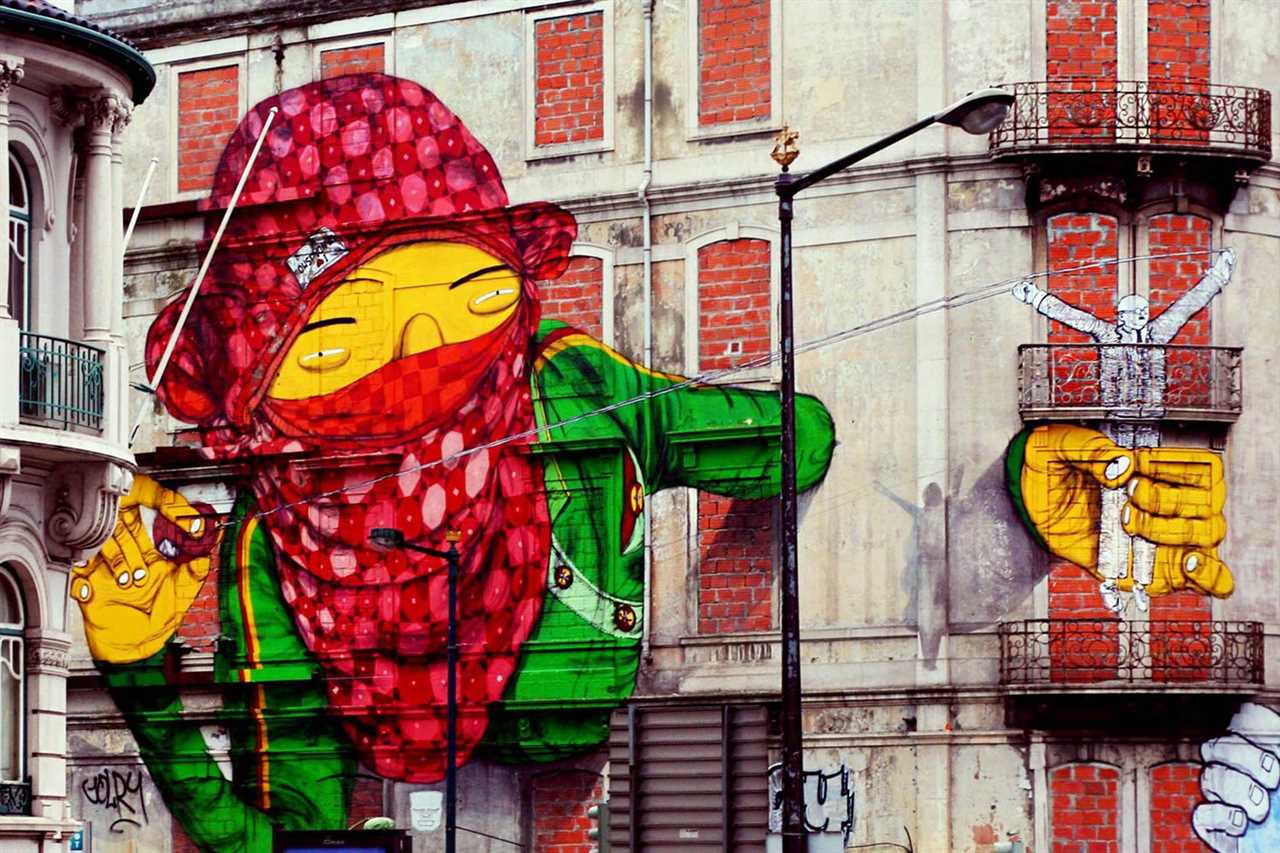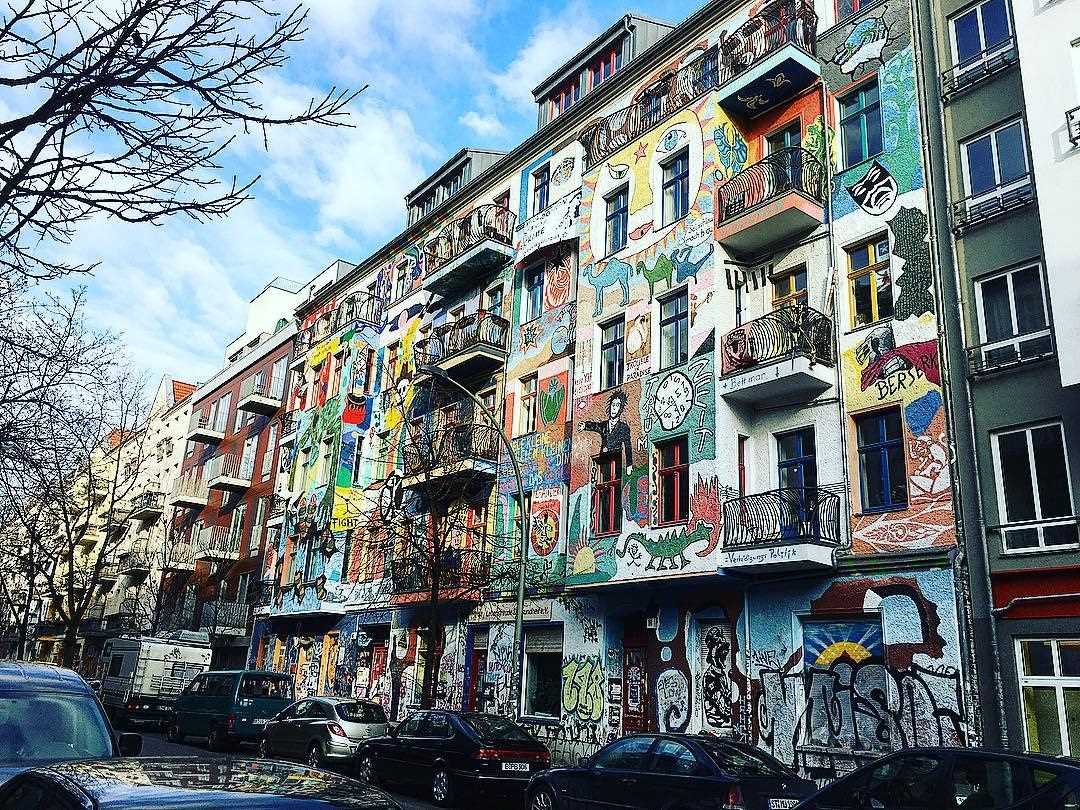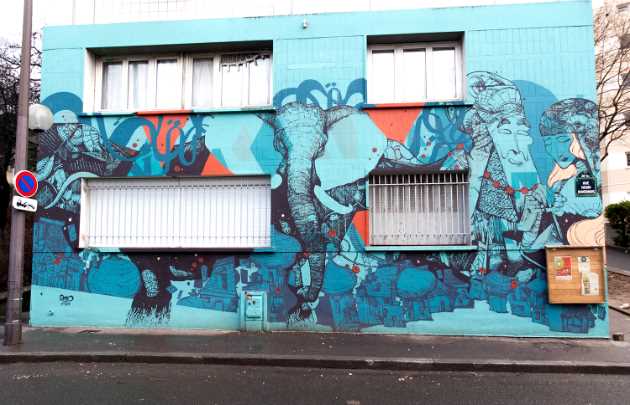Street art has become an integral part of urban culture, transforming city landscapes into vibrant galleries of self-expression. From colorful murals to thought-provoking graffiti, street art has the power to captivate and engage communities around the world.
Street art cities are urban centers that have embraced this artistic form as a means of cultural enrichment. These cities celebrate the creativity and talent of local and international street artists, encouraging their work through dedicated platforms and spaces.
One of the most renowned street art cities is Berlin, Germany. With its rich history and diverse urban landscape, Berlin has become a haven for street artists. The city’s walls are adorned with striking artworks that reflect its vibrant and dynamic atmosphere.
Another notable street art city is Melbourne, Australia. Known for its thriving arts scene, Melbourne showcases an array of street art styles, from realistic portraits to abstract creations. The city’s laneways and alleyways have been transformed into open-air art galleries, attracting locals and tourists alike.
About Urban Art

One of the key characteristics of urban art is its accessibility. Unlike traditional art forms that are often displayed in galleries or museums, urban art is accessible to anyone who passes by. This not only allows for a wider audience to appreciate the artwork, but it also brings art into the public sphere and adds color and vibrancy to the urban environment.
Urban art can take many different forms and styles, ranging from detailed murals to quick tags or graffiti. Some artists use urban art as a way to convey messages or express social or political commentary. Others simply create art for the sake of beautifying the urban landscape.
While urban art is often considered a form of vandalism or illegal activity, it has gained recognition and acceptance in recent years. Many cities have embraced urban art as a cultural phenomenon and have designated certain walls or areas as legal spaces for artists to create their work. This has led to the development of street art cities, where visitors can explore and appreciate the vibrant urban art scene.
Overall, urban art is a dynamic and ever-evolving form of artistic expression that adds creativity and character to urban spaces. It challenges traditional notions of art and brings it directly to the people. Whether it is admired or criticized, urban art continues to thrive and shape the visual landscape of cities around the world.
Embracing Colorful Expressions

Street art has long been a dynamic and vibrant way for individuals to express themselves and their unique perspectives. Through the use of vibrant colors, street artists are able to captivate viewers and create powerful works of art that invite us into their world.
With a wide range of mediums at their disposal, street artists are able to transform dull and everyday buildings into breathtaking displays of creativity. From stunning murals that cover entire walls to intricate and detailed stencils that can be found hidden in alleyways, these colorful expressions add life and character to otherwise grey and monotonous urban environments.
A Platform for Social Commentary

Not only do these colorful expressions serve as a form of artistic expression, but they also provide a platform for social commentary. Street artists often use their work to highlight important social issues and spark conversations among viewers. By utilizing color, these artists are able to capture attention and draw in passersby, inviting them to reflect on the world around them.
Celebrating Diversity and Individuality

Embracing colorful expressions in street art also allows for a celebration of diversity and individuality. Each piece of art is as unique as the artist who created it, showcasing their personal style and perspective. Whether it’s a vibrant abstract painting or a graffiti mural filled with bold colors and intricate designs, street art has the power to promote inclusivity and appreciation for different forms of creativity.
The Power of Murals

Murals have the power to transform a blank wall into a vibrant piece of art that tells a story and captures the imagination. These large-scale artworks can be found in cities around the world, creating a sense of community and identity.
Street art murals are not just about adding color to a neighborhood, they also have the power to spark conversations and bring attention to important social issues. These murals often serve as platforms for artists to express their viewpoints and create awareness about topics such as human rights, environmental sustainability, and cultural diversity.
Another benefit of murals is their ability to revitalize neglected spaces. By transforming abandoned buildings and vacant lots into works of art, murals can breathe new life into an area and attract visitors and tourists. This, in turn, can have a positive economic impact by boosting local businesses and tourism.
Murals also play a role in shaping the identity of a city. By reflecting the local history, culture, and traditions, they contribute to a sense of place and make cities more visually appealing. In addition, murals can help promote civic pride and community engagement, as residents take pride in the unique artwork that represents their city.
Moreover, murals have the power to inspire and empower individuals. They can create a sense of beauty and wonder in everyday environments, reminding people of the potential for creativity and self-expression. Murals also provide a platform for emerging artists to showcase their talent and gain recognition in the art world.
Diverse Mediums of Street Art

Street art is a diverse art form that encompasses various mediums and styles. Artists use a range of materials and techniques to create their vibrant and thought-provoking pieces. Here are some of the diverse mediums commonly used in street art:
Spray Paint: Spray paint is one of the most popular mediums in street art. Artists use spray paint cans to create large-scale, colorful murals that cover entire walls. The vibrant colors and precise lines of spray paint can bring life to any urban landscape.
Stencils: Stencils are another common medium used by street artists. Artists cut out intricate designs on cardstock or other materials and use them as templates. By spraying paint or using a brush, they can quickly reproduce the design onto various surfaces. Stencils allow artists to create detailed and intricate artworks with ease.
Wheatpaste: Wheatpaste is a medium that involves using a mixture of wheat flour and water as a natural adhesive. Artists create posters or prints on paper and then glue them onto walls or other surfaces using the wheatpaste mixture. This technique allows for quick and easy application and removal of the art.
Stickers: Stickers are a popular medium for street artists to spread their message. Artists create small, adhesive designs that can be easily stuck onto various surfaces. Stickers are a quick and effective way to add a touch of art to any urban environment.
Mosaics: Mosaics are a medium that involves creating images or designs using small ceramic tiles, glass, or other materials. Artists piece together these elements to form intricate patterns or pictures. Mosaics can bring a unique and textured element to street art.
Street art is not limited to any specific medium. Artists continuously experiment with new techniques and materials to push the boundaries of this dynamic and ever-evolving art form.

I am a mural enthusiast and a fervent admirer of street art. Rather than creating murals myself, I am passionate about collecting them. My love for street art knows no bounds. I am dedicated to curating and cherishing these artworks that grace the streets. My collection stands as a testament to my profound appreciation for this form of artistic expression.
read about me



